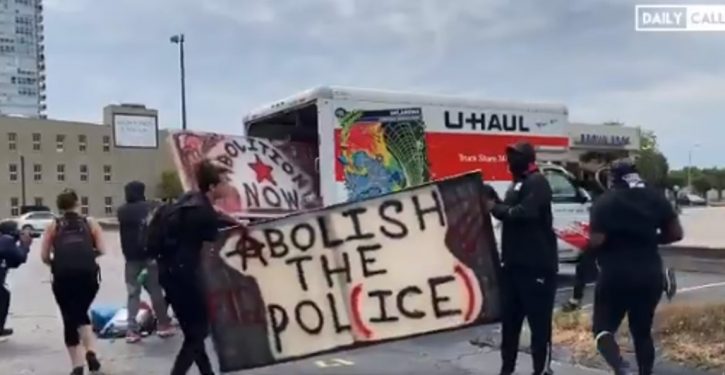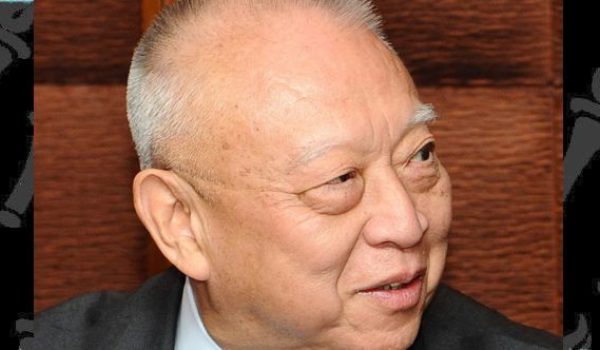
Do black lives matter to the media when the lives are not those of criminal suspects killed by cops? That’s the disturbing question raised by Rav Arora’s column in the New York Post:
Last year saw the largest year-to-year increase in homicides ever recorded in US history. The homicide rate in 34 cities was 30 percent higher in 2020 compared to the previous year. … Victims of these homicides are disproportionately African American. At least 8,600 black lives were lost to homicide in 2020, an increase of more than 1,000 compared to 2019 (7,484). Violent crime is concentrated in primarily low-income, marginalized black communities where the police are underresourced and Democratic leadership has abysmally failed. ….
Meanwhile, politicians and the mainstream media sensationalize and magnify any questionable case involving a black suspect and a white police officer to affirm dogmas about “racial oppression” (even if the suspect was at fault). They obsessively lament racial disparities in every nook and cranny of American life, but the most egregious disparity — in homicide victimization rates — is rarely ever mentioned. Why? Since more than 90 percent of black homicide victims are killed by black offenders, the ghost of endemic white supremacy cannot be invoked to push racial grievance narratives. As a result, the media turns a blind eye. Black lives only seem to matter when racism is involved.
And yet, the probability of an African American being killed by a civilian is more than 30 times higher than that of being killed by a member of law enforcement. In Chicago’s marginalized neighborhoods last year alone, more than three times as many black children died of homicide than the total number of unarmed black Americans killed by the police in 2020. …. Yet … the BLM movement has pushed to defund the police and reduce their presence…These efforts drove police forces nationwide to significantly reduce traffic stops and arrests in the wake of George Floyd’s death, Paul Cassell revealed in a recent study. As a result of the drop in proactive policing, homicide rates dramatically rose across major US cities in the summer and fall of 2020.
Another reason why murder is increasing is that violent offenders are being released from prisons and jails, partly due to COVID-19, and partly due to criminal justice “reform” measures that release violent offenders and shorten their prison sentences. The number of people incarcerated in the United States dropped from around 2.1 million in 2019 to 1.8 million by mid-2020 — a 14 percent decrease. (RELATED: Prison inmate released early kills neighbor, cooks her heart)
When criminals serve less time, crime rates rise. Murder rates rose in the 1970s as murderers spent less time in prison. Longer sentences cut crime. Violent crimes fell in California due to Proposition 8. It increased sentences for repeat offenders who commit willful homicide, rape, and robbery with a gun. That didn’t simply keep violent criminals in jail where they couldn’t commit more crimes. It also deterred people outside of prison from committing crimes.
Will this presidential election be the most important in American history?
Prison sentences for many murderers have recently shrunk. California recently passed a law that keeps 15-year-old serial killers from being tried in adult court where they could get a long sentence. Yesterday, the California Supreme Court upheld that law against a legal challenge arguing it contradicted a voter-approved ballot initiative. In California, adults who committed murder before age 25 became eligible for youth offender parole hearings as a result of legislation enacted in 2017. Last year, Washington, D.C.’s city government passed legislation that would allow previously-convicted murderers to seek release after 15 years, if they committed their crime before age 25.
Virginia was tough on crime until very recently. But a year ago, people who committed murder at age 16 or 17 became eligible for parole in Virginia after a mere 20 years, no matter how many murders they committed.
Forty years ago, Virginia’s Fairfax County had a similar crime rate to neighboring Montgomery County, Md. But that changed after prison sentences got longer in Virginia, and Virginia eliminated parole. By 2019, Montgomery County had twice as high a “violent crime rate” as Fairfax County. That was attributed by legal observers to Maryland being “more lenient on criminal defendants” than Virginia with its “harsh” sentences. Virginia’s violent crime rate in 2018 was less than half of Maryland’s.




